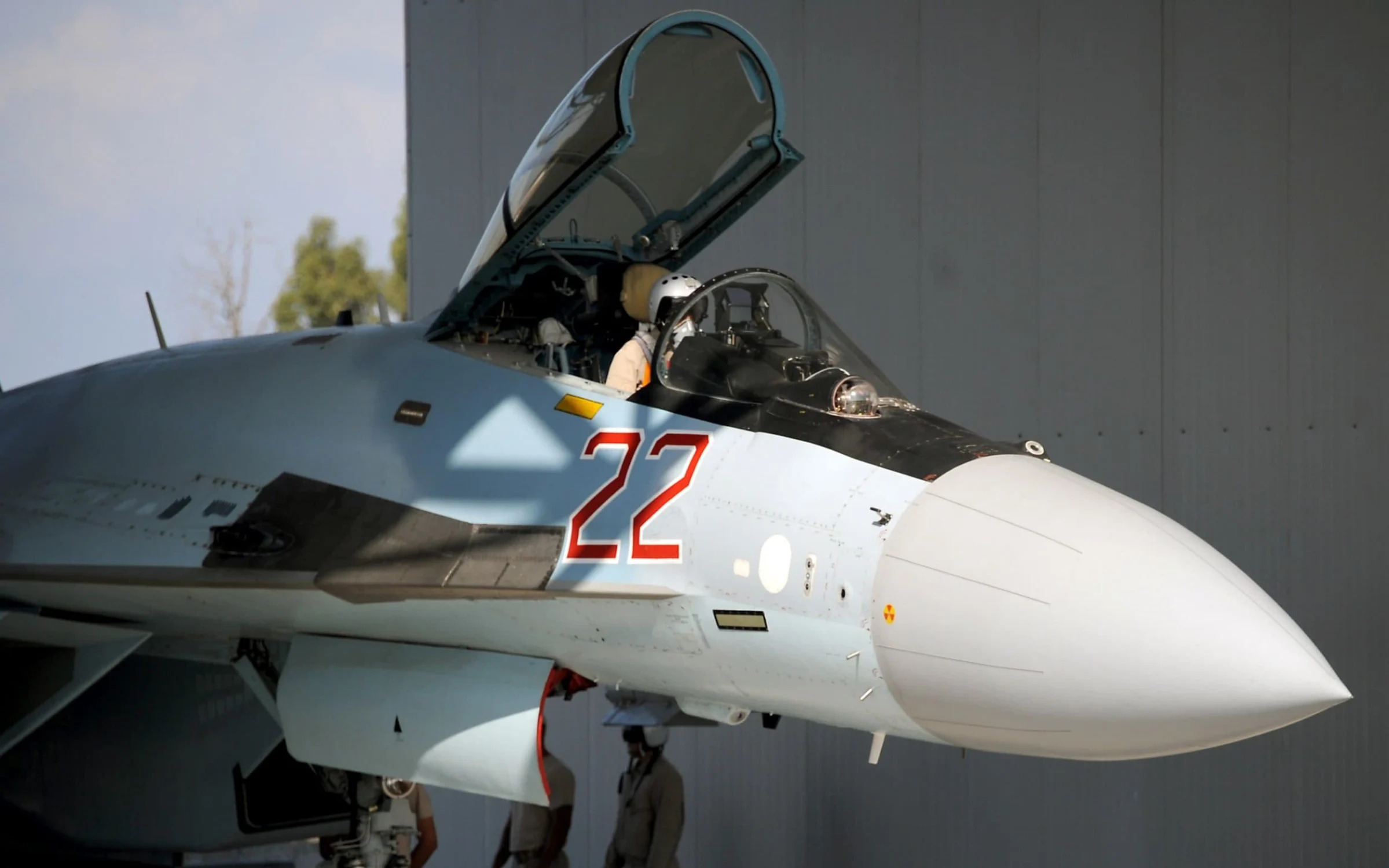Opinion-Crude, cheap and deadly: Russian glide bombs are pounding Ukraine into surrender

If there were any doubts remaining about the importance of air defence in the 21st Century, Iran’s massive air attack on Israel should have dispelled them. If further proof is needed, however, then look at what’s happening in Ukraine.
A Russian air force Sukhoi Su-35 fighter jet is prepared for take off.
Last week a lack of air defence missiles meant that Ukraine was unable to prevent Russia from blowing up the massive Trypilska power station near Kyiv. Along with recent successful assaults around Avdiivka, it heralds a worrying turning point in the conflict: Russian air power is back in a big way, and clearing a path to victory.
Part of its success is the result of newer weapons, but it has also been modifying old, dumb weapons with satellite guidance kits and fins to steer them towards their targets, Vladimir Putin’s forces have been able to seize the initiative. Russian fast jets have been able to release their weapons outside the range of Ukrainian air defences and glide them into targets in the city with devastating effect, or strike deep behind the frontlines, smashing command posts and logistics hubs.
Ukraine’s lack of long-range surface-to-air missiles or an effective fleet of modern fighters capable of countering this airborne threat has meant that Russia has been able to act with relative impunity. In a conflict where every inch of territory recaptured by Kyiv has come at a steep price in blood, Russian jets can now remain just a few miles outside of the Ukrainian defences and unleash utter hell. Even in the air war, every distance counts. Small margins between opposing threat systems determine success or defeat.
US Patriot missile systems, while effective, are a high value item that Ukraine cannot afford to lose and are rarely exposed at the frontline. The much-anticipated F-16s, equipped with long range radar-guided missiles, will be able to contest Russian Su-34s and Su-35s in the air. However, F-16 numbers will be limited, and whether there will be enough to deny the 100 plus daily sorties the Russians were launching before Avdiivka remains to be seen. As a previous Russian autocrat noted, quantity has a quality all of its own.
This real-world data should be invaluable for UK planners. The ugliness of trying to fight a land campaign without air support remains a horrific prospect, and the time it has taken to deploy F-16s is evidence of the inherent complexity of air power. Jets and pilots are a shop window capability: the reality is that squadrons rely on logistics, weapons, engineering expertise, early warning radars and mission data in order to have any sustained effect.
The devastating effect of the glide bombs show that old systems still have relevance, particularly when combined with scale. Russia has quickly modified an established, cheap system into a highly effective one. There are lessons here regarding not only our approach to old stockpiles of weapons, which are generally discarded, but also with the agility of our sovereign defence capability to innovate in a timeline measured in weeks or months, and not years.
We should also reconsider our risk appetite for weapon manufacture and strike a balance between perfect and good enough. When the balloon goes up, do we want a small inventory of expensive and 99.99 per cent accurate weapons or a much larger stockpile of cheaper systems with 95 per cent accuracy?
Our adversaries have already settled on the latter. The Iranian Shahed drones can be manufactured from parts that can escape embargo, making them ubiquitous and abundant. They are not hugely survivable against modern defence systems, but do we want to be spending millions knocking cheap drones out of the sky?
It has been trendy in the 21st Century to think that war at scale is a relic. Procurement has been focussed on smart tech buzzwords; precision, multi-domain, cyber, AI. These are politically palatable havens for defence spending that somehow offered a more acceptable form of aggression, a cleaner, computerised warfare with reduced risk and low collateral damage. Yet in Avdiivka these concepts have been participants but not protagonists.
General Sanders remarked in 2023 that you can’t “cyber your way across a river”. Neither can you cyber-away an attacking wave of 100 Russian fast jets, or 300 Iranian missiles. Industrial age conflict, requiring both scale and mass has returned to the shores of Europe. It’s time we woke up to that.
- Questions and Answers
- Opinion
- Motivational and Inspiring Story
- Technology
- Live and Let live
- Focus
- Geopolitics
- Military-Arms/Equipment
- Sicurezza
- Economy
- Beasts of Nations
- Machine Tools-The “Mother Industry”
- Art
- Causes
- Crafts
- Dance
- Drinks
- Film/Movie
- Fitness
- Food
- Giochi
- Gardening
- Health
- Home
- Literature
- Music
- Networking
- Altre informazioni
- Party
- Religion
- Shopping
- Sports
- Theater
- Health and Wellness
- News
- Culture


